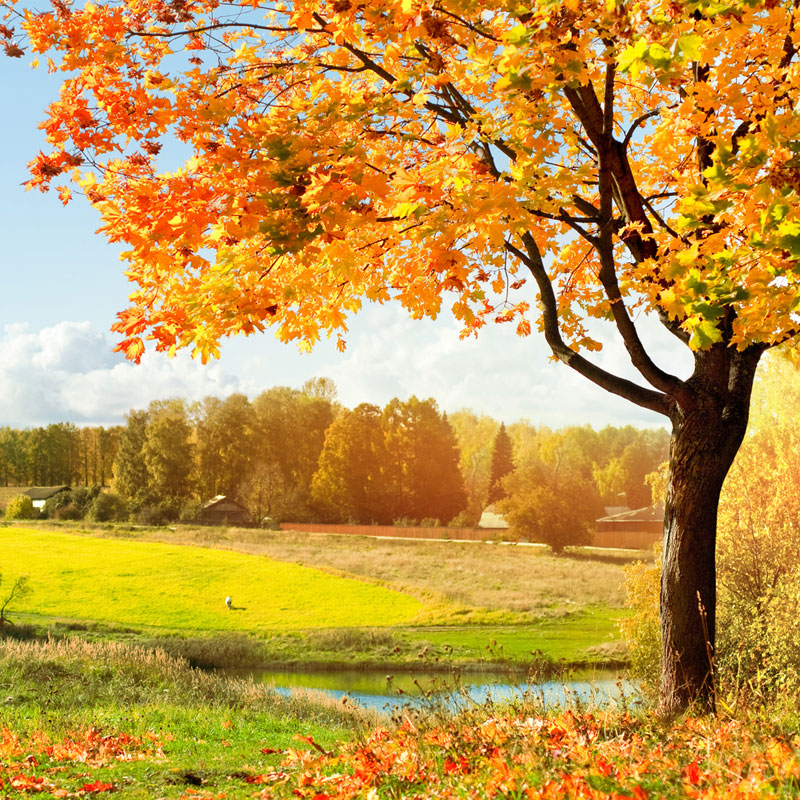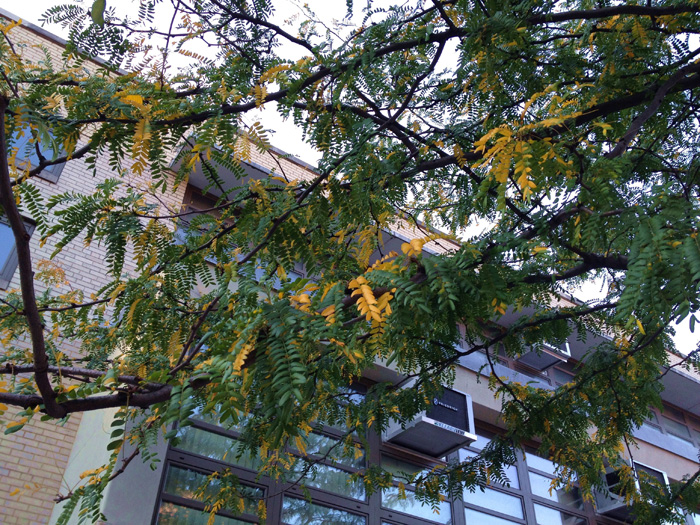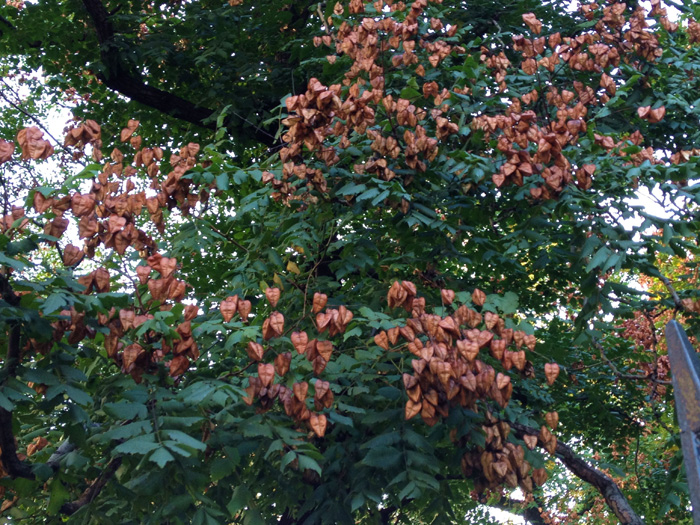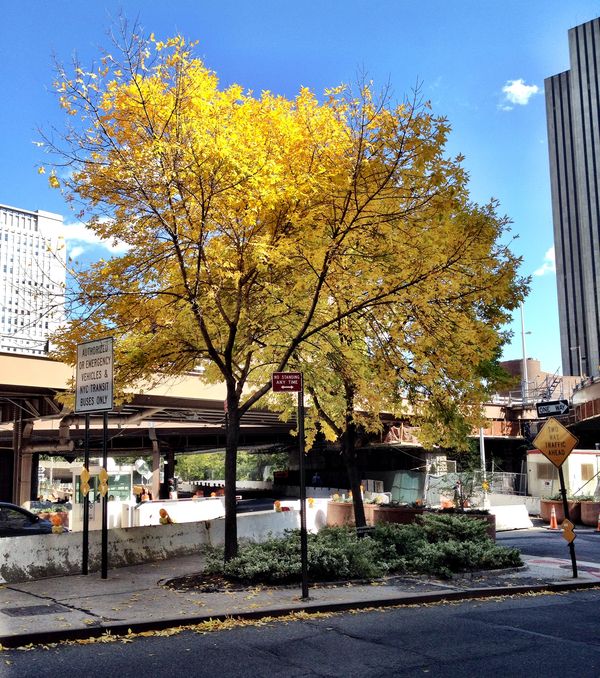6 Trees That Are Easier to Identify in Fall

Fall brings some spectacular views of trees, with their leaves turning hues of orange, yellow, red, purple and brown. But their changing colors provide more than just pretty sights — they can also serve as a marker to help you know what kind of tree you're looking at. Here are a few trees that might be easier to spot in fall.
Honey locust tree

The honey locust tree (Gleditsia triacanthos) grows across the United States, and is most concentrated in the central part of the country, according to the U.S. Department of Agriculture (USDA). It has compound leaves, meaning a single leaf stalk contains a number of smaller "leaflets." The honey locust leaflets are quite small, about 0.3 to 1.5 inches long and 0.2 to 0.5 inches wide. The tree can have 15 to 30 of these leaflets per stalk, according to Utah State University. In the fall, these leaves turn from green to golden yellow. When this tree is covered in these tiny yellow leaves, you can guess how it got its common name. The honey locust tree is the most common street tree in Manhattan; so if you visit the Big Apple this fall, look for these golden trees lining the streets. [Fall Foliage: Why Leaves Change Color]
Baldcypress
In the summer, the baldcypress (Taxodium distichum) looks like an evergreen tree — that is, it has green needlelike leaves and grows cones. But in the fall, its leaves turn red-orange and eventually fall off. This tree is a deciduous conifer, which loses its leaves in the winter. The baldcypress is found throughout the United States, and does well in city conditions, according to the Arbor Day Foundation.
Red maple
The red maple (Acer rubrum) is one of the most abundant trees in Eastern North America, according to the U.S. Forest Service. Its leaves have three lobes, and in the summer, they are green on one side and a paler color on the back. In the fall, this tree lives up to its name, with its leaves turning a deep-red color (although the leaves can turn yellow and orange, too).
Sign up for the Live Science daily newsletter now
Get the world’s most fascinating discoveries delivered straight to your inbox.
Goldenrain tree

The goldenrain tree (Koelreuteria paniculata) is native to China and Korea, but can grow in much of the United States as well. Its leaves are deeply serrated (like the teeth of a saw), and are irregularly lobed, according to the Missouri Department of Conservation. (The leaves look like they've been "pinched-in" in parts.) But if the leaves — which turn yellow in fall — don't give this tree away, its fruit will. The goldenrain tree fruit is a papery capsule that looks a bit like a small pepper or a Chinese lantern. The fruit starts off green, but in the fall, turns a pink or brown color.
Green ash

The green ash (Fraxinus pennsylvanica) is native to the Eastern and Central United States and Canada, and is popular partly because of its resistance to insects and diseases, according to the U.S. Forest Service. It is one of the first trees to change color in the fall, with its leaves turning yellow in September, according to the USDA. In contrast, the related white ash tree, which is very similar in appearance otherwise, can have orange, red and purple leaves in the fall.
Fruit trees
A number of trees have edible fruits that ripen in the fall, which provide another identifying factor. In fact, the word harvest comes from the Old English word "haerfest," which means autumn. Apple trees, plum trees and hawthorn trees — which produce small red berries — all have fruit that is ripe in the fall, according to the BBC.
Follow Rachael Rettner @RachaelRettner. Follow Live Science @livescience, Facebook & Google+. Original article on Live Science.

Rachael is a Live Science contributor, and was a former channel editor and senior writer for Live Science between 2010 and 2022. She has a master's degree in journalism from New York University's Science, Health and Environmental Reporting Program. She also holds a B.S. in molecular biology and an M.S. in biology from the University of California, San Diego. Her work has appeared in Scienceline, The Washington Post and Scientific American.










